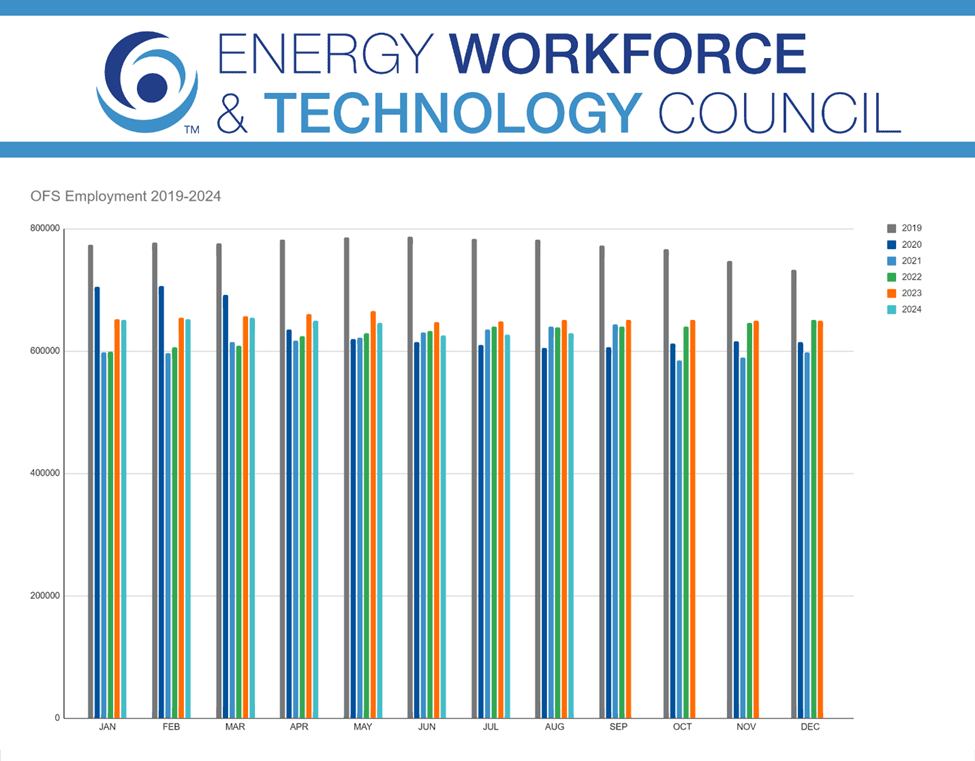Energy Workforce & Technology Council today released its monthly jobs report, highlighting a positive trend of steady growth in employment across the U.S. energy services sector. Total jobs in the sector reached 629,435 in August 2024, reflecting an increase of 2,989 positions from July, according to preliminary data from the Bureau of Labor Statistics (BLS) and analysis conducted by the Energy Workforce & Technology Council.
Following recent reports that a review of BLS data indicated 818,000 fewer jobs nationwide in March 2024 than initially reported, the energy services sector experienced adjustments to overall employment numbers. Revised figures show a recalibration to approximately 630,000.
Despite these adjustments, the energy services sector demonstrated resilience, adding nearly 3,000 jobs in August. Texas remains the largest contributor to the sector’s workforce, boasting 306,724 jobs and leading the nation in energy services employment. Other significant contributors include Louisiana with 52,558 jobs, Oklahoma with 47,900 jobs, and Colorado with 25,555 jobs.
Energy Workforce President Molly Determan commented on the report, stating, “The August job gains underscore the ongoing strength and adaptability of the energy services sector. Despite broader economic challenges, our industry continues to provide opportunities driven by innovation and the essential role of energy services in supporting our nation’s energy needs.”
State-by-State Employment Breakdown for August 2024:
Texas: 306,724 jobs
Louisiana: 52,558 jobs
Oklahoma: 47,900 jobs
Colorado: 25,555 jobs
New Mexico: 23,541 jobs
California: 23,037 jobs
Pennsylvania: 22,786 jobs
North Dakota: 19,575 jobs
Wyoming: 14,603 jobs
Ohio: 10,449 jobs
Alaska: 9,756 jobs
West Virginia: 9,630 jobs
About Energy Workforce & Technology Council:
Energy Workforce & Technology Council is the national trade association for the global energy technology and services sector, representing more than 650,000 U.S. jobs in the technology-driven energy value chain. Energy Workforce works to advance member policy priorities and empower the energy workforce of the future.






